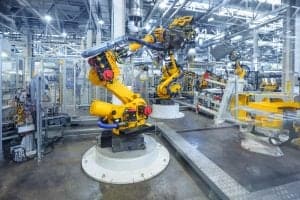
A step-by-step approach to smart manufacturing holds opportunities for manufacturers to gain actionable insights and benefit from various growth paths in maturity.
Management experts are proposing a step-by-step building-block approach for building the digital factory of the future. Such an approach to smart manufacturing borrows from the “Kaizen” philosophy that propelled Japanese companies to global leadership — and may be the approach needed for widely scattered and siloed industrial operations.
“Kaizen,” a philosophy that first originated in Japan, emphasizes continuous improvement on an extremely holistic scale. The concept involves making the work environment more efficient and effective, in measured steps, “by creating a team atmosphere, improving everyday procedures, ensuring employee engagement, and making a job more fulfilling, less tiring, and safer,” according to Investopedia, Measured steps is the key here.
Often, it’s tempting to take a big-bang approach, implementing galactic-scale systems that are costly to set up and rarely provide tangible payback in any reasonable amount of time. A measured, incremental approach will deliver better results, and it’s time to extend the Kaizen philosophy to the emerging realm of smart manufacturing and digital transformation, according to Nicole Shonan Otoki, Ph.D., senior research scientist at Mitsubishi Electric Corporation, writing in the Industry IoT Consortium’s Innovation Journal.
The challenge, Otoki and her co-authors write, is that digital transformation in manufacturing is complex and involves a lot of moving parts being upgraded at different stages. “The journey to have smart manufacturing fails to achieve its intended results. Therefore, it is vital to take a realistic approach, as manufacturing implementations and improvements happen in steps, not jumps,” they write. “There is a need in every step of smart manufacturing practice to measure how well the current manufacturing has been employed and predict the achievable capability with reasonable ROI.”
Otoki and her colleagues recommend a maturity model, called Smart Manufacturing Kaizen Level or SMKL, to scale the support on smart manufacturing implementation and help manufacturers to make the right investments. The model employs key performance indicators (KPIs) “to provide insight about what’s happening in practice. SMKL identifies gaps between the current situation and the goals of implementation and helps organizations to understand the issues and address them.”
For example, a common goal in many smart manufacturing environments is to link instances between OT (operation technology) and IT (information technology). The union of these two areas of the business looks good on paper, but The challenge is that “it is not easy to identify the bottlenecks and issues and make an active optimization along production networks,” Otoki and her co-authors state. “A close-to real-time and product or process-specific information is required to be exchanged.”
The goal, then, is to introduce an edge computing approach that connects the OT and IT sides. “In doing so, boundaries of using data are extended. Edge computing is addressed as a platform to do data collection, analysis, diagnosis, and feedback in real time and secured.”
A step-by-step approach “holds opportunities for manufacturers to gain actionable insights and benefit from various growth paths in maturity to pursue an adaptable system implementation with a reasonable investment,” Otoki and her team state. “We call this approach ‘think big, start small.’ In this context, manufacturers can capitalize their essentials of organizing an unprecedented performance of smart manufacturing.”






























